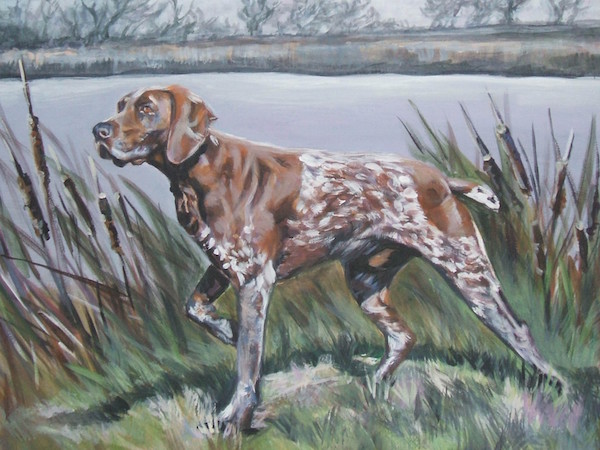
Europe has had dogs that pointed as far back as the 13th century. Italians called them “net dogs,” while the French and Germans referred to them as “quail dogs.” They were found in all sort of sizes, colors and shapes, but with the industrial age and the advent of the sporting gun, hunting changed and shooting birds on the fly became popular. Hunters also changed to include more middle-class huntsman, and because few of these men could afford a large kennel of “dog specialists,” they needed one dog who could do it all. They needed an all around “gundog,” as the dogs came to be called.
Before the early part of the 18th century, only a few pointers existed in Germany, and this lead to experimentation on how best to improve the German dogs. Breeders did what they were inclined to do, but most were in agreement that what was needed was a high performing dog that could work in water, in a heavily treed forest, or on open land; a dog so versatile that it would hunt all species of upland game birds and waterfowl, as well as all kinds of small game, but also trail and hold at bay deer and other large game.
And they got it.
German Shorthaired Pointers as we know them today were developed in the mid- to late nineteenth century from descendents of the German Bird Dog crossed with Spanish Pointers, English Pointers,English Foxhounds, the Arkwright Pointer, and perhaps the Bloodhound, but not Bloodhounds as we know them today, but rather, German blood scenting hounds used in Germany to trail wounded big game, specifically, the Hanovarian Schweisshunds and perhaps the Wiemaraner. It was a prince from the Royal House of Hanover – Prince Albrecht zu Solms-Braunfeld – who encouraged breeders to select breeding stock on the basis of function rather than form. Form did follow function, and the German Shorthaired Pointer slowly developed into the breed we know today, a dog with a naturally water-repellant coat and webbed feet that can work in rough terrain and icy water. The National Deutsche Kurzhaar Klub was formed followed by the implementation of an elaborate hunt testing program, and despite disruptions caused by WWI, the German Shorthaired Pointer was recognized by the AKC in 1930.
The German Shorthaired Pointer boasts one of the most dual championships (field trial and show) of any breed in the United States. Such is the German Shorthaired Pointer’s versatility that it has come to be said that, “If you can’t find anything with a Shorthair, there’s nothing there.”
German Shorthaired Pointer by LA Shepard
https://www.facebook.com/L.A.ShepardArt
http://fineartamerica.com/art/all/l.a.shepard/all
https://www.etsy.com/shop/TheDogLover
